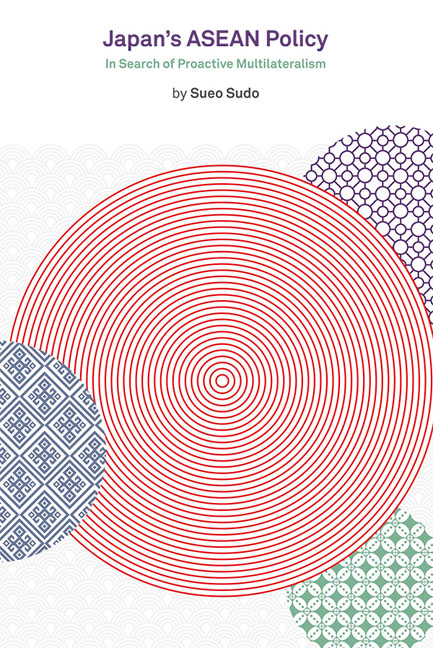Book contents
- Frontmatter
- Contents
- List of Figures and Tables
- Preface
- List of Abbreviations
- Introduction
- 1 ASEAN in Japanese Multilateral Foreign Policy
- 2 Embarking on Japan's ASEAN Policy: The Limitation of the Mainstream
- 3 Straightening the ASEAN-Indochina Divide: The Pursuit of the Alternative Stream
- 4 Consolidating an ASEAN-centred Policy: The Challenge of the Intermediate Stream
- 5 Fortifying a Japan-ASEAN Strategic Partnership: The Resurgence of the Mainstream
- 6 Towards a New Regionalism in East Asia
- 7 Conclusion
- Bibliography
- Index
- About the Author
2 - Embarking on Japan's ASEAN Policy: The Limitation of the Mainstream
Published online by Cambridge University Press: 06 June 2017
- Frontmatter
- Contents
- List of Figures and Tables
- Preface
- List of Abbreviations
- Introduction
- 1 ASEAN in Japanese Multilateral Foreign Policy
- 2 Embarking on Japan's ASEAN Policy: The Limitation of the Mainstream
- 3 Straightening the ASEAN-Indochina Divide: The Pursuit of the Alternative Stream
- 4 Consolidating an ASEAN-centred Policy: The Challenge of the Intermediate Stream
- 5 Fortifying a Japan-ASEAN Strategic Partnership: The Resurgence of the Mainstream
- 6 Towards a New Regionalism in East Asia
- 7 Conclusion
- Bibliography
- Index
- About the Author
Summary
Immediately after the war, how could Japan secure the freedom of action to advance into Southeast Asia again when ill feelings towards the nation were prevalent? The answer seems to lie in the process of mutual persuasion between Japanese and U.S. decision-makers, who incorporated Prime Minister Shigeru Yoshida's “economics above all” principles and Washington's “superdomino” metaphor, bridging the two with the concept of U.S.-Japan economic cooperation. Consequently, a triangular, mutually reinforcing relationship among the United States, Japan, and Southeast Asia had come into existence and had become integral to American objectives in Asia, as the Joint Chiefs of Staff cogently put it in July 1952:
United States objectives with respect to Southeast Asia and United States objectives with respect to Japan would appear to be inseparably related. Moreover, the Joint Chiefs of Staff are of the opinion that Japan's security and Western orientation are of such importance to the United States position in the Pacific area that (1) in the implementation of NSC 125/1 and NSC 124/2 the United States must take into account Japan's dependence upon Southeast Asia for her economic well-being, and (2) the loss of Southeast Asia to the Western World would almost inevitably force Japan into an eventual accommodation with the Communist controlled area in Asia.
For Prime Minister Yoshida, U.S.-protected Southeast Asia was simply a region of abundant natural resources and of lucrative markets for Japanese products. The region was all the more important for the Yoshida government as a means through which to bring about economic success at home, which in turn could guarantee a conservative party's dominance in Japanese politics. In other words, Southeast Asia was an integral part of the Yoshida Doctrine, which consisted of three principles of foreign policy: (1) minimum defence, (2) economic development at home and economic diplomacy abroad as the ultimate goal, and (3) the separation of politics from economics. However, the very success of the Yoshida Doctrine brought home the fact that Japan's economic diplomacy needed a complete reappraisal in the early 1970s. Through stormy anti-Japanese movements, Japanese foreign policy was forced to make a gradual shift from bilateral to multilateral relations. Why and how did Japan decide to shift its foreign policy orientation? The answer can be found rather easily if we carefully examine the very first decade of Japan-ASEAN relations.
- Type
- Chapter
- Information
- Japan's ASEAN PolicyIn Search of Proactive Multilateralism, pp. 31 - 65Publisher: ISEAS–Yusof Ishak InstitutePrint publication year: 2014

